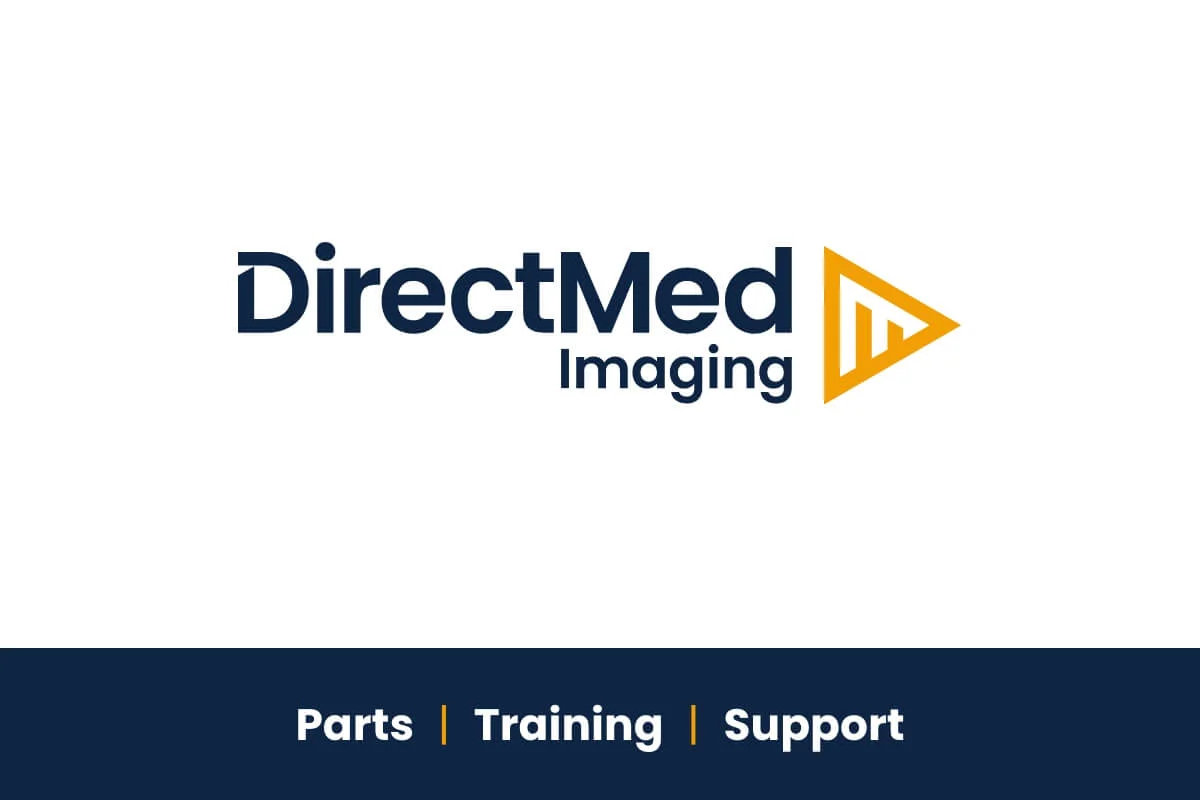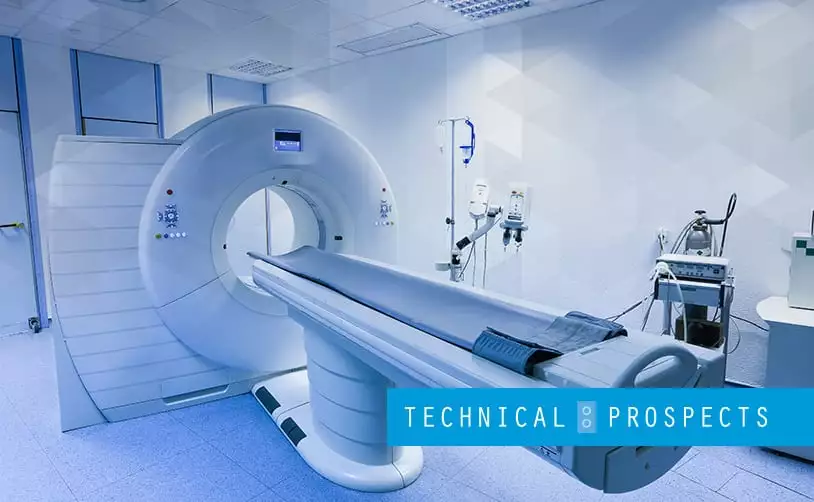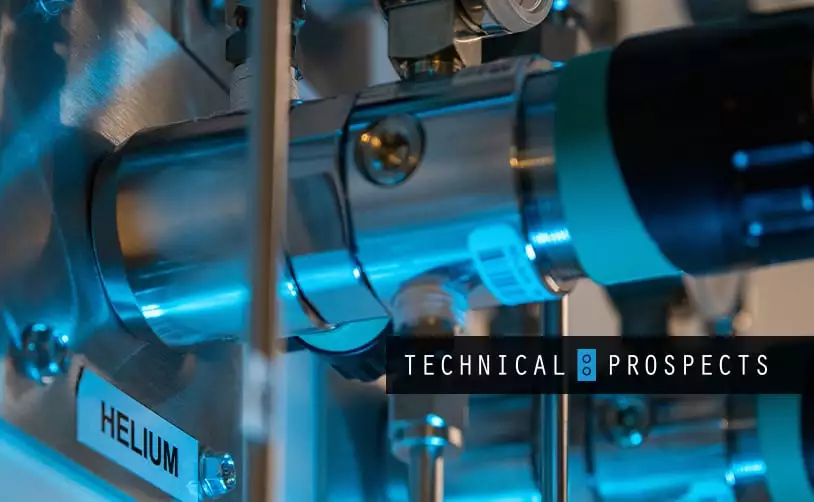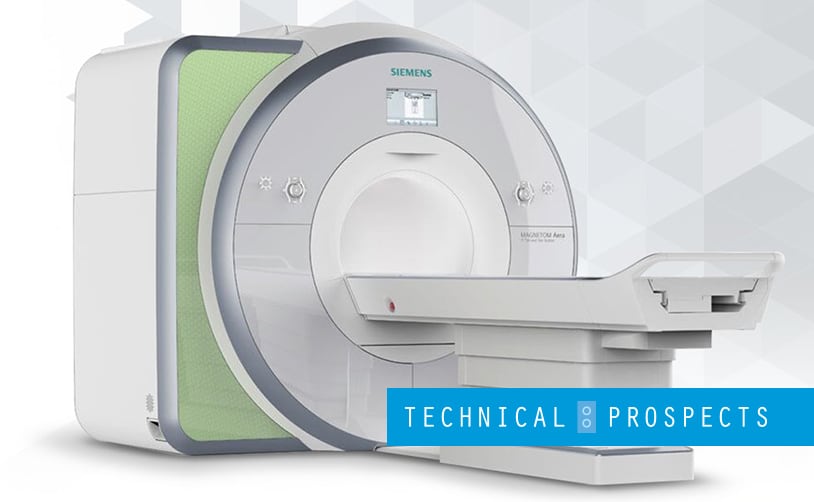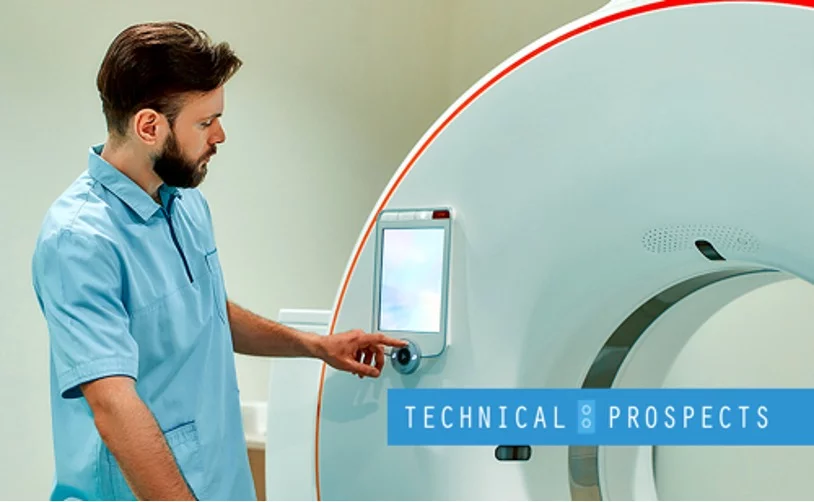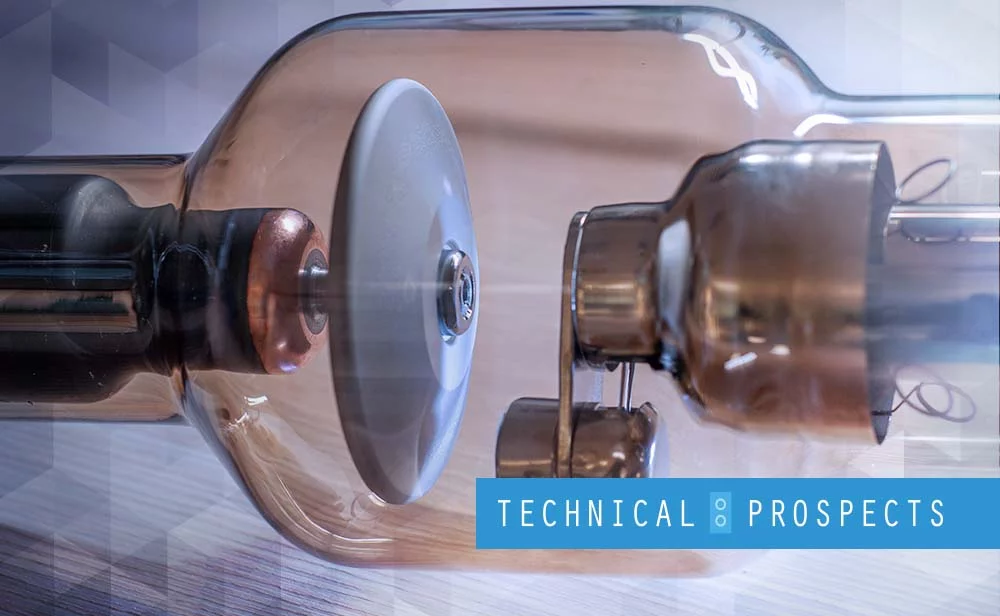GE began investing heavily in the development of MRI technology and advancement in the early 1980s, and has been an industry leader since. Nearly 4 decades later, GE’s original models wouldn’t even recognize their successors. With faster scan times, greater slice count, more flexible machinery and more advanced software, GE’s modern MRI models are instrumental contributors to medical science and public health.
Whether your facility is accomodating for a high level of general scans, or specializes in neurology patients, GE has created an MRI scanner to suit your needs. In a clinical setting, 1.5T and 3T models are the most commonly used. This nomenclature measures the power of the machine’s magnet in Teslas (T). As you’d guess, a 3T magnet is twice as powerful as a 1.5T magnet.
Whether you choose to purchase a 1.5T or 3T model MRI machine depends on your facility’s specific needs and budget. Although advances in technology have made the powerful 3T models safer and more suitable for clinical use, they are still more commonly used in research settings and facilities with very specific needs, or facilities that both do research and see patients. For most medical providers, a 1.5T model is sufficient.
Popular 1.5T Models
1.5T model MRI machines are better suited for clinical settings, and are still considered state-of-the-art in medical imaging to many professional practices. They are more than adequate for general diagnostic purposes, and moderate patient traffic. Their high quality images are good for general diagnostic purposes.
MRI machine models can vary in their specific functions due to variances in software, RF channels, SNR technology and physical aspects, like bore size. GE’s 1.5T model MRI machines are the Artist, Voyager, Explorer, Creator, the Optima series, the HD series, the Excite II, and the GE 1.5T LX. Each has its own specifications that make it better suited for different types of scans.
GE 1.5T Artist
This model is best used for optimal patient comfort and has a 70cm bore magnet. This model introduced Direct Digital Interface (DDI) technology. DDI tech is a direct analog-to-digital conversion of information, using fiber optic cables, from the coils to the electronics cabinet. This technology allows for either enhanced SNR (for better image quality) or faster scan times.
GE 1.5T Voyager
SImilar to the Artist, the Voyager was also introduced in 2016. It doesn;t support as many RF channels as the artist does (128), but it does offer the advantage of lower power requirements. For facilities on a tighter budget with the same high-quality imaging needs, this model can be the better choice.
GE 1.5T Explorer
The Explorer also has a wide bore magnet, at 60cm, which is optimal for patient comfort. This machine also boasts quiet technology that drastically changes the noise levels both inside and outside of the tube. This can be hugely beneficial for patients who have reservations or fears of the MRI process. The Explorer also uses the same tried and true CXK4 magnet that has been praised for its stability and dependability over the last 20 years.
GE 1.5T Creator
The Creator uses the same CXK4 magnet and OpTix RF technology that the Explorer series does, at a much more modest price. It also has the same gradient strength and advanced SNR technology as the Explorer and LX series MRI machines, but with only 8ch.
GE 1.5T Optima MR360 Advance
The Optima MR390 Advance was a precursor to the Explorer in 2013, and was an advancement on the EXCITE HDXT 23X models, with greater patient comfort in mind, as well as more cost-effective energy requirements. While it reduces total overall costs, it increased performance levels from the EXCITE HDXT 23X models, and led the way for the Optima 450W. This machine uses 16 channels, and “express coils,” which do not need to be repositioned in between scans.
Trouble finding these models? Look for these instead.
With each of the above mentioned models being developed in the several years, it is unlikely you’ll be able to get your hands on one unless you’re purchasing new from GE. Many facilities choose to purchase used MRI machines, with years of life left in them, in order to lower the facility’s initial costs.
The price difference between new and used MRI equipment can be in the hundreds of thousands of dollars for some facilities. On average, a new 1.5T MRI machine can cost between $1,100,000 and $1,500,000. Used models can be as low as $200,000 for some models, potentially saving you a lot of money on the initial costs. Prices for used models can depend on a number of factors, like the expected remaining life on some of the machine’s components, and the amount of use the machine has had.
GE 1.5T Optima 450W
You’re much more likely to come across this GE model in the used or refurbished MRI machine market. This model first launched in 2010 and uses a different style magnet than the CXK4 mentioned above. In fact, it uses the same magnet as the GE 1.5T Artist model, which means its magnet can be retained and used to upgrade to the Artist if your facility’s imaging needs change in the future. It uses GEM suite technology, which allows its 32 channels capabilities to be used individually or collectively by the coils. This means the machine can focus on a specific body part or a broader body segment.
GE 1.5T Optima 450
The 60cm bore version of the 450W is the Optima 450. This system is upgraded with more current 23.0x software, and has the same CXK4 magnet as the LX and EXCITE series MRI machines. It offers the same stability and reliability as other CXK4 magnet machines, at a slightly lower price.
GE 1.5T HD, HDe, HDX & HDXT
The GE 1.5T HD, HDe, HDX and HDXT systems are GE’s first line of MRI machines with high definition imaging. The HD generation was a huge upgrade from GE’s LX MRI models, with advancements in both software and hardware. Purchasing an HD machine gives you the opportunity to own a machine at a low initial cost, and expand on it as your budget increases or your imaging needs change.
The HDe is a more compact version of the HD, and saves space requirements and your environmental footprint by up to 30 percent. It is, in fact, GE’s most compact model of MRI machine, but pays for its space saving with a lower slew rate and fewer channel capabilities. It is also important to note that the HDe’s parts are often cheaper to replace than other HD models.
Both the HDX and HDXT use the reliable CXK4 magnet, and are only different in the software upgrades from the HDX to the HDXT. For this reason, it would not cost much to upgrade from the HDX to the HDXT. Be aware that many aftermarket models of the HDXT often began as HD models and were expanded upon.
GE 1.5T Excite II & LX Models
The LG and EXCITE II models are more dated than the HDand newer models, but are still found for sale online. The EXCITE II is an operating system (Linux) upgrade away from the LX model scanner. The LX can only operate on 4 channels (Linux will support 8) and has a variety of upgrade options for its electrical cabinet, which should be considered in determining the remaining lifespan of the machine.
Popular 3.0T GE MRI Models
Although most clinical facilities operate smoothly with a 1.5T MRI machine, some require the use of a much more powerful magnet. The 3T model MRI machine is most often used for academic and clinical research, or scans that require more detailed images (like brain scans). 3T models are significantly more expensive than 1.5T models, which is another reason why most clinical settings are content working with a 1.5T.
A new 3T MRI Machine can cost, on average, between $1.3 million and $2.1 million. Refurbished models can save you hundreds of thousands of dollars, depending on your facility’s needs and the machine’s life expectancy, just like the 1.5T model.
Proper maintenance, care and operation of the MRI equipment can help prolong its life. You could potentially save years of life for your equipment by allowing it to warm up properly and housing it in a clean, climate controlled area. Because there have been so many advancements in recent history for MRIs, and because 3T models are usually required by a smaller, more specific demographic of users, you may not find many options for purchasing used or refurbished 3T MRI machines.
However, you might see a few of GE’s newer models hitting the used imaging equipment market over the next few years, as medical technology advances at an impressive rate. The 3T models GE currently manufactures are the SIGNA series: The Premier Air, the Architect Air, the Pioneer, and the PET/MR with QuantWorks technology. These state-of-the-art machines are the next phase in excellence for both clinical treatment and medical research.
